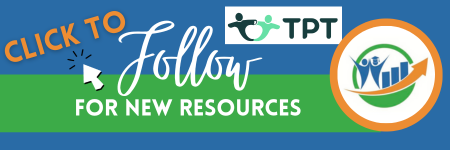From Levels to Skills: Fostering Growth in Advanced Readers
- Dianne McKinley
- Dec 1, 2023
- 4 min read
Updated: Oct 9

I recently received an email from an educator asking a question that I think might be on the minds of many teachers. I’m rephrasing the question but essentially it boiled down to this:
If we aren’t using leveled readers anymore, how do I support my students who are exceeding grade-level expectations?
Most educators are beginning to transition to more structured literacy practices. That means small groups look different. Many teachers are grappling with how to transition from leveled readers to skill-based reading groups.

Why the transition to skill-based reading groups?
During guided reading with leveled text, teachers moved students through text that gradually increased in complexity. Students were grouped by what level they were assessed to be on. For example, a teacher might have a group of students who are at the C/D level. So the teacher would read books with students in that range until there was evidence that the group could start to tackle text in the E/F range.
Aside from the use of predictable text in the early levels forcing reliance on the 3-cueing method of reading instruction, there was another problem. This is a scenario often faced during practices that grouped students by reading level. A teacher has 5 students reading in the C/D range of leveled text according to their assessments. However, when she thinks about them individually they need very different things to make reading gains. Student 1 needs additional work with phonemic awareness, Student 2 and 3 do not know all of their letter sounds, Student 4 knows their letter sounds but has difficulty blending them into words, and Student 5 is unable to retell the story after reading.
How to transition to skill-based reading groups for all readers in your care?
This scenario leads us back to our question. If we know that isn’t working, and we want to transition away from it, how do we help all students improve their reading skills?
When students aren’t mastering the core curriculum goals, the transition is a little easier. For example, if a student isn’t performing as expected on core resource materials, it’s obvious that the student might need additional practice or reteaching in a small group. To be more specific, let’s say you are teaching consonant blends with your core resources and based on your checks for understanding you identify five students who aren’t mastering the skill. It’s obvious, the teacher creates a small group focused on phonemic awareness/phonics targeting consonant blends.
However, we have many readers who enter their kindergarten, first, and second grade classrooms exceeding expectations. How do we support their reading growth as well? This starts to get a little trickier and it isn’t as obvious what to do. Here are a few suggestions on things to consider with readers in small group who are excelling.
Make sure the student isn’t relying more on memorization of whole words and appears to be a better reader than what they are. Typically early readers can memorize enough whole words to look like they are reading but still may need work at the sound symbol level. Make sure they are successful with text that holds them accountable to the phonics skills you’ve taught them. For example, the student can read the core decodable text easily on the first attempt.
Practice more advanced levels of phonemic awareness, particularly addition, deletion, and substitution. Students should be able to manipulate sounds in words easily and quickly.
Continue to progress through the phonics scope and sequence at more advanced levels in small groups. Students during small group instruction can practice sound-spelling patterns beyond what is being covered in the whole group instruction. Reviewing phonics skills at lower levels on the scope and sequence during whole-group isn’t going to hurt advanced kids. It often supports the development of spelling etc.
During small group instruction, match decodable text to where you are on the phonics scope and sequence. This may be more advanced than the reading done in the whole group.
Introduce multi-syllabic words sooner. For example, if the student has mastered CVC, then you might want to include words like napkin, fabric, puppet, rabbit, etc.
Incorporate as much writing as possible. This includes work and the word and sentence level. It can include things like sentence dictation as well.
Once a student has mastered most of the sound-spelling patterns on the phonics scope and sequence, the student should start to transition to authentic text. This typically happens between the middle of first to the middle of second grade. For advanced students, it might happen sooner. Encourage students to select sets of books centered around a common theme or interest. Reading in text sets will help build vocabulary and knowledge, the building blocks of comprehension.
Focus on fluency. Once students are accurate word readers, start shifting your focus to fluency instruction. Remember fluency isn’t just reading quickly. Rate is important, but doesn’t guarantee fluency. Teach and practice reading with prosody in small groups. Focus on things like phrasing, expression, and intonation. Reading should sound like talking.
Conclusion
Transitioning from traditional leveled readers to skill-based reading groups marks a pivotal shift in supporting every student’s literacy journey. By embracing individualized skill development, we empower educators to tailor instruction, and reader’s the skills they need for the next step of their learning. If you would like support with literacy instruction at your school, contact us today.
Download this FREE Toolkit:
Leadership Lightbulbs:
Smart Tips for Early Learning Leaders
https://www.incompassinged.com/leadership-lightbulbs resource for educators.
Download this FREE Toolkit:
Support Productive Struggle in Reading: https://www.incompassinged.com/productive-struggle
A downloadable guide to recognizing student signals and knowing exactly how to respond.




